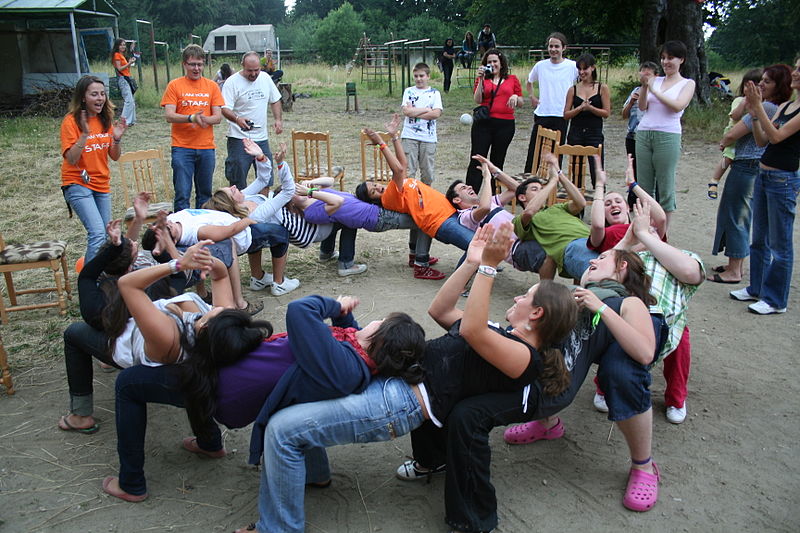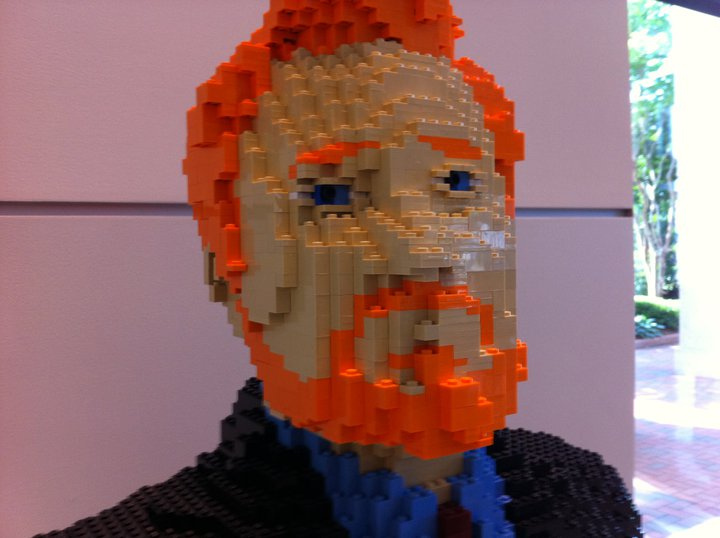Archive for July, 2013
Block Diagrams Are People Too
For systems with high levels of complexity, such as organizations, business models, and cross-domain business processes, it’s characterize the current state, identify the future state, and figure out how to close the gap. That’s how I was trained. Simple, elegant, and no longer fits me.
The block diagram of the current state is neat and clean. Sure, there are interactions and feedback loops but, known inputs generate known outputs. But for me there are problems with the implicit assumptions. Implicit is the notion that the block diagram correctly represents current state; that uncontrollable environmental elements won’t change the block diagram; that a new box or two and new inputs (the changes to achieve the idealized future state) won’t cause the blocks to change their transfer functions or disconnect themselves from blocks or rewire themselves to others.
But what really tipped me over was the realization that the blocks aren’t blocks at all. The blocks are people (or people with a thin wrapper of process around), and it’s the same for the inputs. When blocks turn to people, the complexity of the current state becomes clear, and it becomes clear it’s impossible to predict how the system will response when it’s prodded and cajoled toward the idealized future state. People don’t respond the same way to the same input, never mind respond predictably and repeatably to new input. When new people move to the neighborhood, the neighborhood behaves differently. People break relationships and form others at will. For me, the implicit assumptions no longer hold water.
For me the only way to know how a complex system will respond to rewiring and new input is to make small changes and watch it respond. If the changes are desirable, do more of that. If the changes are undesirable, do less.
With this approach the work moves from postulation to experimentation and causation – many small changes running parallel with the ability to discern the implications. And the investigations are done in a way to capture causality and maintain system integrity. Generate learning but don’t break the system.
It’s a low risk way to go because before wide-scale implementation the changes have already been validated. Scaling will be beneficial, safe, and somewhat quantifiable. And the stuff that didn’t work will never see the light of day.
If someone has an idea, and it’s coherent, it should be tested. And instead of arguing over whose idea will be tested, it becomes a quest to reduce the cost of the experiments and test the most ideas.
Self-Perspective Using Mental Time Travel
 If you’re sitting in the present, you’re sitting in a good place – you’re more mindful of what’s going on, more aware of your thinking, and more thoughtful of your actions. But there’s one thing sitting in the present can’t provide, and that’s perspective. To create perspective, to understand the hows and whys of your journey to the present, requires reflection on the past. But to self reflect without distorting the image requires separation from your present.
If you’re sitting in the present, you’re sitting in a good place – you’re more mindful of what’s going on, more aware of your thinking, and more thoughtful of your actions. But there’s one thing sitting in the present can’t provide, and that’s perspective. To create perspective, to understand the hows and whys of your journey to the present, requires reflection on the past. But to self reflect without distorting the image requires separation from your present.
Here’s an idea to create separation – an exercise in mental time travel where your past becomes your present and your present becomes your future. It goes like this: Set your mental way-back machine for five years ago, turn the crank and jump back to a five-years-ago present. From your seat in your new present (your past), erase your future (your present) to open it up to unlimited possibilities. Now, imagine a future (one of the infinite possible futures) that is identical to the one that actually happened. (But remember, you don’t know it happened, so it’s only a potential future state.) Okay. You’re now ready to mint your own perspective.
From your seat in your new present (your past), ask yourself three questions.
If your imagined future (your actual present state) came to be:
- How would you feel about your relationships with your friends, your community, and your family?
- How would you feel about your health?
- How would you feel about the alignment between your actions, values, and passions?
With your answers in hand (and I suggest you actually write them down), use your way-back machine to jump forward to the present present. Sitting in the present (the real one), read your answers (written five years ago) to the three questions above.
How do you feel about your answers? What do you like about your answers? What makes you uncomfortable? What surprised you? Write down your answers because that’s the unfiltered perspective you were looking for.
Now the valuable part – two final questions (write down the actual answers):
Taking guidance from your newly self-minted perspective:
- Going forward, while sitting in the present, what will you do more of?
- Going forward, while sitting in the present, what will you do less of?
If you are sufficiently intrigued (or confused) to try the exercise and find value in it, please pay it forward and share it with others.
And don’t forget to repeat the process every year.
Own Your Happiness
 Own your ideas, not the drama.
Own your ideas, not the drama.
Own your words, not the gossip.
Own your vision, not the dogma.
Own your effort, not the heckling.
Own your vacation, not the email.
Own your behavior, not the strife.
Own your talent, not the cynicism.
Own your deeds, not the rhetoric.
Own your caring, not the criticism.
Own your sincerity, not the hot air.
Own your actions, not the response.
Own your insights, not the rejection.
Own your originality, not the critique.
Own your passion, not the nay saying.
Own your loneliness, not the back story.
Own your health, not the irrational workload.
Own your thinking, not the misunderstanding.
Own your stress level, not the arbitrary due date.
Own your happiness.
Build A Legacy Of Trust
 We set visions, define idealized future states, define metrics, and create tools and processes to realize them. It’s all knit together, the puzzle pieces fight tightly, and it leaves out the most important part – people and their behavior.
We set visions, define idealized future states, define metrics, and create tools and processes to realize them. It’s all knit together, the puzzle pieces fight tightly, and it leaves out the most important part – people and their behavior.
Metrics represent the all-important output of our tools and processes, and we’re so fascinated by metrics because customers pay for outputs they stand for. The output of the product development process is the recipe for the product, and the output of the manufacturing process is product itself. We’re muscle bound with metrics because these outputs are vitally important to profitability. Here’s a rule: the processes and tools we deem most important have the most metrics.
Metrics measure outputs, and managing with output metrics is like driving a car while looking in the rear view mirror. But that’s what we do. But what about managing the inputs?
The inputs to tools are people and their behaviors. People use tools, and how they use them – their behavior – governs the goodness of the output. Sometimes we behave otherwise, but how people use the tools (the inputs) is more important than the tools. But don’t confuse the sequence of steps with behaviors.
All the steps can be intricately defined without capturing the desired behavior. 1.) Load the solid model – see Appendix C. 2.) Set up the boundary conditions using the complicated flow chart in Appendix D. 3.) Run the analysis. 4.) Interpret the results. (Which is far too complicated to capture even in the most complicated appendix.) But the steps don’t define the desired behavior. What’s the desired behavior if the flowchart doesn’t come up with boundary conditions that are appropriate? What’s the behavior to decide if they’re inappropriate? What’s the behavior if you’re not sure the results are valid? What’s the behavior to decide if an analysis is needed at all?
The desired behaviors could go something like this: If the boundary conditions don’t make sense, trust your judgment and figure out why it doesn’t make sense. Don’t spend all day, but use good judgment on how long to spend. If you’re still not sure, go ask someone you trust. Oh, and if you think an analysis isn’t needed, trust your judgment and don’t do one.
And it’s the same for processes – a sequence of steps, even the most complete definition, doesn’t capture the desired behavior when judgment is required.
To foster the desired behavior, people must feel they can be trusted – trusted to use their best judgment. But for people to feel trusted, they have to be trusted. And not trusted once, or once in a while, consistently trusted over time.
Computers and their software tools quickly predictably crank through millions of ultra-defined process steps. But when their processes require judgment, even their hyper-speed can’t save them. When things don’t fit, when it hasn’t been done before, when previous success no longer applies, it’s people and their judgment that must carry the day.
Everyone has the same computers and the same software tools – there’s little differentiation there. People are the big differentiators. And there’s a huge competitive advantage for those companies that create the culture where their people error on the side of exercising their judgment. And for that, you have to build a legacy of trust.
On Independence
I know I can speak my mind, but must remember others have the same right.
I know how lucky I am, but must keep in mind others are not.
I think of my wonderful rights, but steep in the huge obligation that comes with them.
I sometimes forget I have first world problems, and know I cannot truly comprehend third world problems.
I know I didn’t have to sacrifice anything, but others willingly sacrificed everything.
I must remember that I have it good, and I have an obligation to give back.
I must remember that my independent thought isn’t necessarily right, it’s just independent.
I want to keep in front of me we’re all immigrants, we just differ in when we arrived.
I must remember that independence is fueled by diversity, and our differences must be respected and validated.
I know my kids take for their independence for granted, but so do I.


 Mike Shipulski
Mike Shipulski